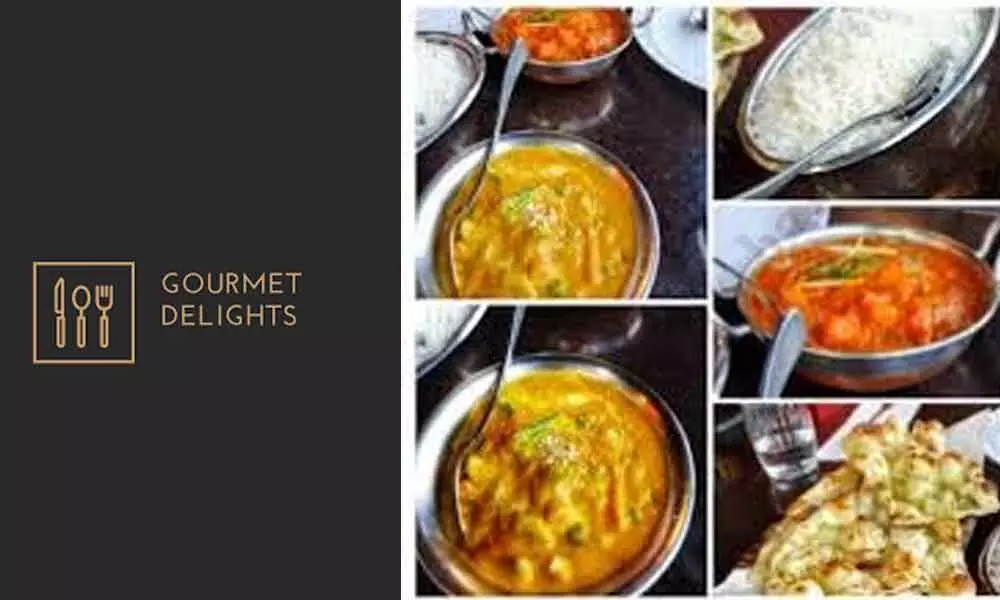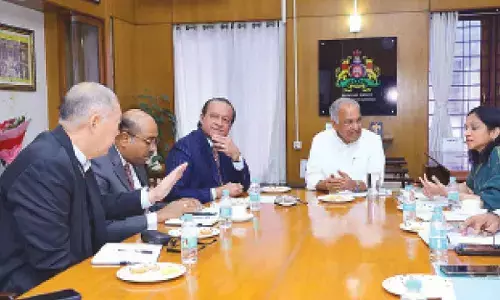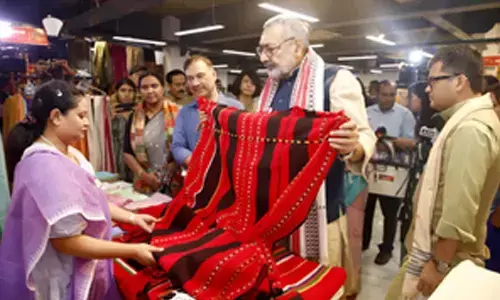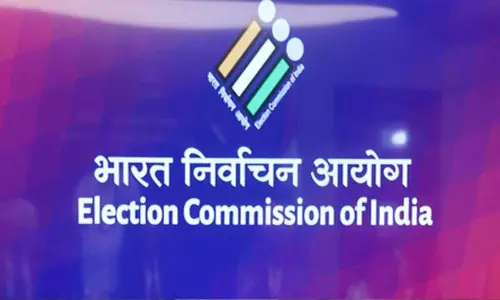Gourmet delights: Gone were the days

Gourmet delights: Gone were the days
Unless the needs of thirst and hunger are met adequately, no person can function properly. An army, it is said, marches on a full stomach.
Unless the needs of thirst and hunger are met adequately, no person can function properly. An army, it is said, marches on a full stomach. In diplomacy, as well as in business relations, it is well-known that good drink and food create an agreeable ambience in which fruitful discussions can take place. Little wonder, then, that it is said that a good wife knows that the way to a man's heart is through his stomach!
All my life, I have never been a gourmet, or a glutton. And nowadays, so long as a reasonable amount of food, of acceptable quality and variety, is available at the appointed time, I am a contented person.
There was a time, however, when one did relish good food. When I was a student at the Nizam College in Hyderabad, on a princely allowance of Rs 3 a day given by my mother, (generously enhanced subsequently to Rs 25 week), one could not only have lunch at the nearby Taj Mahal hotel, but also I had enough money left to indulge in luxuries such as a pan, a few smokes and a leisurely return home on a rickshaw. Once in a while, indulged also in a delicious lunch, at the Kwality's next door. Much later, as a postgraduate student and, subsequently, while in service, one could afford high-end restaurants, such as Nanking's in Secunderabad, which served exquisite Chinese food. Among other popular restaurants in Hyderabad was the Havmor, at Basheerbagh, which specialised in Chole and Bhature. And in hot summer afternoons, it tasted divine after a bottle of cold beer!
In later years, when we lived in a flat in Satya Marg, Chanakyapuri, in Delhi, we used to order takeaway food from many popular places, including Gulhati's in Pandara Road, the India International Centre and the Delhi Gymkhana club. And when one felt like going out to eat, among the preferred destinations was Kake di Hatti, in Connaught Place. And the last word in luxury, when it comes to good food, were really the meals served at the formal dinners at the Raj Bhavan, during my days as Secretary to the Governor of Andhra Pradesh, and, subsequently, when I was Secretary to the Vice President of India, at the Rashtrapati Bhavan, in the occasional banquets.
The formal affairs were meticulously planned, in terms of table plans and seating arrangements. A green light would come on, as a dish was served, which switched to red once the visiting dignitary had finished the course. One often found that, to one's dismay, a dish was summarily removed, even when one was only halfway through eating it! I also recollect with pleasure the extremely tasty lunch I once had with the late Dr PL Sanjeeva Reddy at the Rashtrapati Bhavan when he was the Special Assistant to President Sanjiva Reddy.
My mother was a gifted culinary artist (like I suppose, all people think their mothers are, much to the chagrin of the wives!). My mouth still waters when I recall the snacks she made at home and the elaborate preparation (watching which, I would lick my lips in anticipation) that preceded their arrival at the table. The sandwiches, the ice cream made in a home-made appliance, in which crushed ice and salt were the refrigerant, the delectable 'rava laddoos' and gulab jamoons deserve special mention. Over the years we also had many good cooks at home, one of whom made an 'avial' which was simply out of this world. Another one used to produce a delicious stew, Malayali style. And then there was this highly temperamental genius of a cook, called Bhattacharjee, at Raj Bhavan, Hyderabad, who excelled in producing somewhat exotic Epicurean delights, such as Navratan Pulao and fish mayonnaise.
And those familiar with the epic Mahabharata will know that Nala, the king of Nishadha, and Bheema Sena, the second of the five Pandava brothers, were both known to be experts in the culinary art. Having said that, I think I need to confess that if I were to try my hand at cooking, it would, quite literally, result in a pig's breakfast!
A truly memorable buffet spread was the one at the breakfast hall, in the VVIP guesthouse, at Jeddah, where I was put up, when I had accompanied Vice President Hidayatullah on an official visit. The guest house itself was eloquent testimony to the opulence and extravagance symbolic of the Saudi Arabian royalty. And the spread was simply beyond one's imagination in terms of quantities, variety and quality.
According to the Hindu custom, a full and nutritious meal, which is also easily digested, should ideally comprise five types of items. They are those which can be consumed as they are, those which are munched, those which are licked, those which are squeezed and eaten and those which are liquids and can be drunk.
Some religions also prohibit certain specific foods from being consumed, such as pork among the Jews and Muslims. And in Christianity, Seventh Day Adventists discourage beverages such as alcohol, otherwise not forbidden in that religion. Orthodox Hindus also avoid consumption of beef. Clearly what is a favourite in one religion, or region, maybe taboo in another. In other words what is sauce for the goose may not be sauce for the gander!
Meals at (what is now known as) the Lal Bahadur Sastri National Academy of Administration, in a manner of speaking, were an integral part of the training curriculum. Officer Trainees (OTs) were inducted into the art of practicing correct etiquette at the table, such as using the proper forks, knifes and spoons, for the appropriate dishes, in the proper order, and observing prescribed table manners. As a measure of ensuring that they acquired a degree of cosmopolitanism in their eating habits, they were served meals prepared in accordance with the customs in different parts of the country, by rotation, on different days of the week. On specified days, what was known as a 'dry lunch' was served. There was neither rice nor roti in those meals, which were typically of a Western style with soup, cutlets, cold salads mayonnaise and the occasional non-vegetarian dish. Some of the OTs, those from the southern states in particular, would make a pretense of eating the lunch, and then go out and have dosas, idlis and such!
(The writer is former Chief Secretary, Government of Andhra Pradesh)
(The opinions expressed in this column are that of the writer.The facts and opinions expressed here do not reflect the views of The Hans India)














